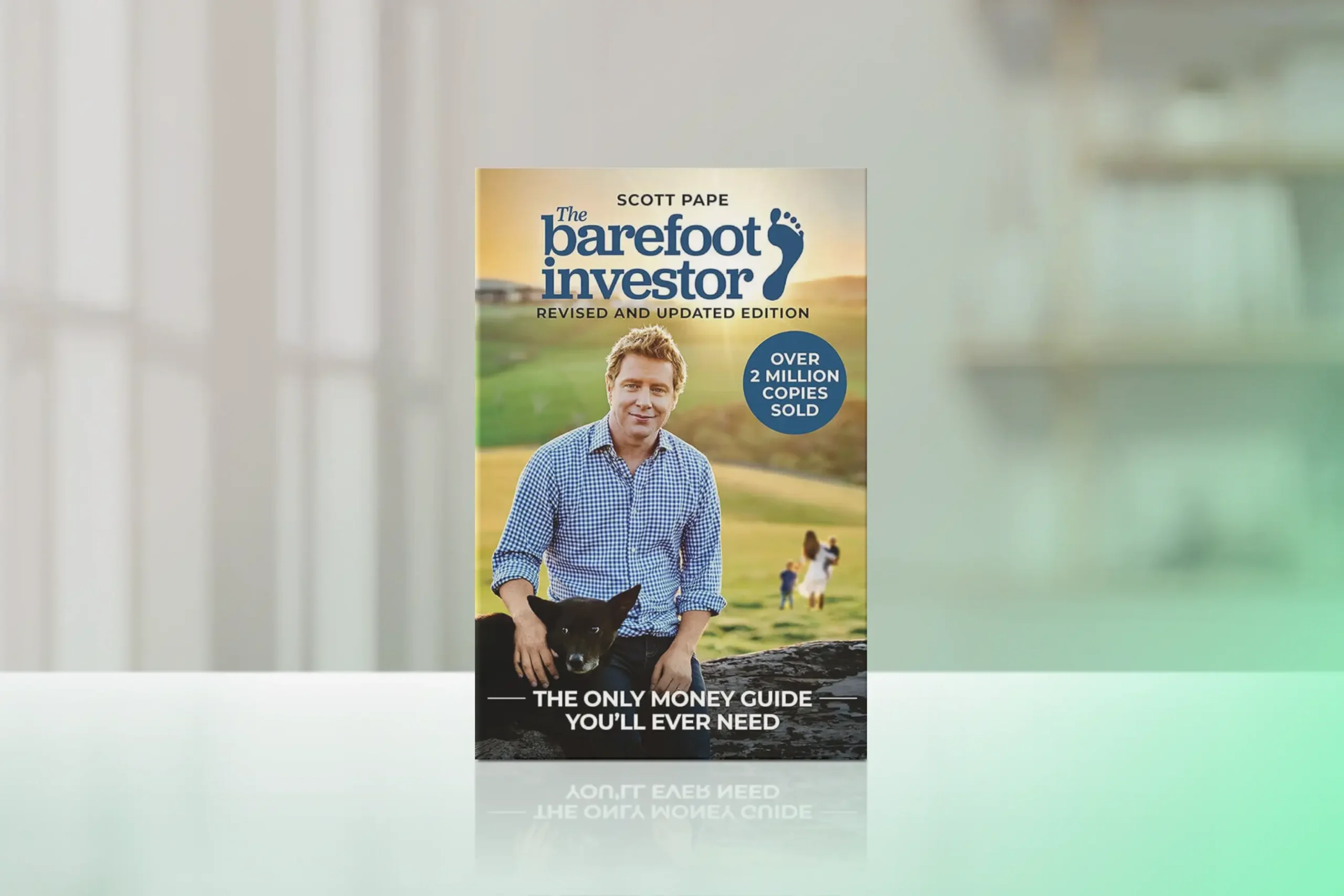Financial freedom means having control over your money—not the other way around. It’s the ability to live life on your terms without financial stress. Whether you’re paying off debt, growing savings, or building wealth through smart investing and passive income streams, achieving financial independence starts with effective money management and clear goals. This comprehensive guide breaks down practical steps to earn more, invest wisely, and create lasting financial freedom through strategic financial planning.
Inside this article:
TL;DR
Financial freedom means having enough income and assets to live without depending on a paycheck. Achieve it through: diversifying income streams (side hustles, passive income); investing strategically with compound interest; protecting wealth with insurance and tax optimization; spending intentionally aligned with values; developing a healthy money mindset; and tracking progress consistently. Success requires balancing practical systems, strategic decisions, and psychological shifts—not perfection, but consistent progress.

1. What Is Financial Freedom
Financial freedom is having enough savings, investments or passive income to live your desired lifestyle without being stressed about money or needing to work for a regular paycheck.
Financial freedom means having control over your money—not the other way around. We gain the freedom to do what we love, but more importantly, financial security gives us psychological freedom—the peace of mind to handle life’s unexpected challenges. When your basic needs are met, you can focus on meaningful work, support others, and live in alignment with your values.
The Benefits of Financial Freedom:
- Time freedom: Stop trading hours for income and focus on what matters most.
- Career flexibility: Change jobs, start a business, or pivot without financial stress.
- Peace of mind: End the anxiety of living paycheck to paycheck.
- Security: Handle emergencies or life changes without financial collapse.
- Healthier relationships: Reduce money-related stress and conflict.
- Better health: Enjoy improved mental and physical well-being.
- Generosity: Support loved ones and causes you care about.
- Personal freedom: Make choices based on values, not money pressure.
- Growth opportunities: Invest in learning and personal development.
- Retirement choice: Decide when and how you want to work.
Financial freedom doesn’t require millions in the bank. It requires alignment between income (earned or passive), expenses, and life goals through effective personal finance strategies. For some, this might mean $2,000 monthly covering all needs. For others, it could require $10,000+. The key is creating a sustainable financial ecosystem that supports the life desired through consistent wealth building.

2. Why Financial Freedom Matters
Financial freedom reshapes every part of your life. It enhances your health, deepens your relationships, and gives you the clarity to focus on what truly matters.
We gain the freedom to do what we love, but more importantly, financial security gives us psychological freedom—the peace of mind to handle life’s unexpected challenges. When your basic needs are met, you can focus on meaningful work, support others, and live in alignment with your values.
Financial Freedom Benefits:
- Mental and physical health: People with financial security experience lower stress levels and live longer than those under chronic financial stress. (Source). Understanding the emotional side of debt is crucial for your overall wellbeing.
- Better relationships: Money conflicts are a leading cause of divorce. Financial security removes stress that damages partnerships and creates stronger, healthier relationships. (Source)
- Career choices: Most workers stay in jobs they dislike primarily due to financial constraints. Those with financial freedom can pursue meaningful work aligned with their values. (Source) If you’re wondering about signs it’s time to move on from your job, financial security makes that transition possible.
- Sleep and cognitive function: 68% of people with financial stress report sleep disruption. Financial stress also reduces cognitive performance. (Source)
- Life satisfaction: Those with financial security report significantly higher happiness levels and are much more likely to volunteer and contribute to their communities. (Source) This connects directly to the science of happiness.
Key Takeaway: Financial freedom directly impacts every dimension of your life—from how long you live to the quality of your relationships, your ability to do meaningful work, and your overall happiness. The stress of financial insecurity isn’t just uncomfortable; it’s a significant health and wellbeing risk. Building financial freedom isn’t a luxury—it’s an investment in your health, relationships, and the freedom to live authentically.

3. Key Steps to Financial Freedom
The foundation for financial freedom is built on three essential steps: honest assessment, clear goal-setting, and the right mindset.
Before diving into wealth building strategies and investment techniques, it’s crucial to lay a solid foundation for the financial freedom journey. Here are the key steps to achieve financial freedom:
- Assess your current financial situation – Get an honest picture of where you stand today
- Set clear financial goals – Define where you want to be in 1, 5, and 10 years
- Develop a growth mindset – Believe in your ability to learn and improve your financial situation
Assess Your Current Financial Situation
The first step towards financial freedom is getting a clear picture of the current standing. Many people avoid this step for months—even years—when deep down, they know exactly what needs to be done. That avoidance itself provides valuable data about the relationship with money. The act of honestly assessing where one stands isn’t about judgment; it’s about creating a foundation for the financial freedom deserved.
| Category | What to Calculate | Why It Matters |
|---|---|---|
| Net Worth | Total Assets – Total Liabilities | Your overall financial health snapshot |
| Monthly Income | All income sources combined | Understanding your earning power |
| Fixed Expenses | Rent, utilities, insurance, debt payments | Non-negotiable monthly obligations |
| Variable Expenses | Food, entertainment, shopping, gas | Areas where you have spending control |
| Debt Summary | All debts with balances and interest rates | Identifying high-cost debt to prioritize |
| Savings Rate | (Income – Expenses) ÷ Income × 100 | Percentage of income going toward future |
| Emergency Fund | Months of expenses currently saved | Financial resilience measure |
Recent studies show that nearly 44% of people avoid checking their account due to financial stress. However not knowing and the uncertainty is often worse than reality. Simply knowing the numbers—even when they’re not pretty—can immediately reduce financial anxiety
Set Clear Financial Goals
With a clear understanding of the current situation, it’s time to set goals. Where does someone want to be in 1 year? 5 years? 10 years? Goals should be SMART: Specific, Measurable, Achievable, Relevant, and Time-bound. Learn more about effective goal setting.
Short-Term Goals (0-2 years):
- Build $1,000-$2,000 starter emergency fund
- Pay off high-interest credit card debt
- Create and stick to monthly budget for 6 months
Mid-Term Goals (3-5 years):
- Save 3-6 months expenses in emergency fund
- Pay off car loan or student loans
- Establish consistent 15% savings rate
Long-Term Goals (10+ years):
- Build portfolio providing $50K annual passive income
- Become completely debt-free including mortgage
- Reach financial independence for early or traditional retirement
Want to dive deeper? Check out our comprehensive guide on how to set and achieve financial goals that align with your life purpose.
Develop a Growth Mindset About Money
Beliefs about money can significantly impact the financial journey. Many people carry limiting beliefs about wealth that hold them back. These might include thoughts like “I’m not good with money” or “Rich people are greedy.”
Challenge these beliefs. Embrace the idea that anyone can learn, grow, and improve their financial situation. Cultivate curiosity about financial topics and commit to ongoing financial education. Discover how cultivating a growth mindset transforms your financial capabilities.
Contrary to popular belief, financial literacy isn’t inherited—it’s learned. What if the most successful wealth-builders aren’t those with natural talent, but those who simply decided to educate themselves? Explore the psychology of saving to understand how mindset shapes financial outcomes.
Key Takeaway: Creating a solid foundation for financial independence requires honest assessment of current finances, clear goal-setting and developing a growth-oriented mindset that embraces continuous learning about personal finance and wealth building strategies.

4. How to Build a Strong Financial Foundation
A strong financial foundation rests on three pillars: a realistic budget, an emergency fund, and a strategic debt repayment plan.
With a clear understanding of the current situation and goals, it’s time to start building a solid financial base through effective money management. Here’s how to build your foundation:
- Create and stick to a budget – Establish a spending plan that aligns with your values and goals
- Establish an emergency fund – Build a safety net for unexpected expenses
- Tackle your debt – Implement a strategic plan to eliminate high-interest debt
Creating and Sticking to a Budget
Let’s be honest—the word “budget” probably makes most people want to close this article and scroll social media instead. Most budgeting advice feels restrictive, like being told to survive on plain rice and beans for the next decade. But here’s where conventional budgeting wisdom gets turned on its head.
What if budgeting wasn’t about restriction at all, but about permission? Permission to spend on what truly matters while cutting back on things that don’t bring joy or move toward goals.
A budget is simply a plan for money management. It helps understand where money is going and ensures allocation in a way that aligns with goals and values. For a complete guide, check out Budgeting Made Easy: How to Create and Stick to a Budget.
| Method | How It Works | Best For | Pros | Cons |
|---|---|---|---|---|
| 50/30/20 Rule | 50% needs, 30% wants, 20% savings/debt | Beginners wanting simplicity | Easy to understand, flexible | May not work for high cost-of-living areas |
| Envelope System | Cash divided into category envelopes | Overspenders, visual learners | Prevents overspending, tangible | Inconvenient in digital world |
| Pay Yourself First | Savings/investing automated before spending | High earners, investors | Prioritizes future, automated | May not address spending habits |
| 60% Solution | 60% committed expenses, 10% each to retirement/long-term/short-term/fun | Those wanting balance | Balanced approach | Requires stable income |
Looking for practical ways to optimize your budget? Explore our 100 smart money hacks to lower your expenses.
Establishing an Emergency Fund
An emergency fund is a financial safety net. It’s money set aside to cover unexpected expenses or loss of income. Having this fund can prevent going into debt when life throws a curveball. Aim to save 3-6 months of living expenses in an emergency fund. Start small if needed—even $1,000 can make a significant difference in an emergency. Learn how to build an emergency fund when money is tight.
Here’s something surprising: research shows that people who build a small emergency fund ($1,000-$2,000) while paying off high-interest debt are much more likely to become completely debt-free than those who wait to save until all debt is eliminated. The psychological boost of having some cushion matters more than the mathematical optimization.
Keep the emergency fund in a separate, easily accessible savings account. It should be available when needed, but not so easy to access that there’s temptation to dip into it for non-emergencies.
Tackling Debt
Debt can be a significant obstacle on the path to financial freedom. Many people find this stage particularly challenging, and understandably so. The weight of debt affects not just finances, but mental health and life choices.
Debt Repayment Strategies:
| Strategy | How It Works | Best For | Psychological Benefit | Mathematical Benefit |
|---|---|---|---|---|
| Debt Avalanche | Pay minimums on all debts, extra to highest interest rate first | Math-minded savers | Slower initial wins | Saves most money on interest |
| Debt Snowball | Pay minimums on all debts, extra to smallest balance first | Those needing motivation | Quick wins boost morale | Pays less interest than avalanche |
| Debt Consolidation | Combine multiple debts into single loan at lower rate | Multiple high-interest debts | One payment simplifies life | Lower rate saves money |
| Balance Transfer | Move high-interest debt to 0% APR card | Good credit, disciplined | Breathing room from interest | Can eliminate interest if paid in intro period |
| Hybrid Approach | Pay off one small debt for win, then switch to avalanche | Balanced personalities | Gets initial momentum | Still optimizes interest savings |
For comprehensive guidance, read our step-by-step guide to breaking free from debt.
Steps to Tackle Debt Effectively:
- List all debts with balances, interest rates, and minimum payments
- Choose a repayment strategy that fits your personality and situation
- Look into options for lowering interest rates (balance transfers, consolidation, negotiation)
- Automate minimum payments to avoid late fees
- Apply any extra money (bonuses, tax refunds, side hustle income) to debt
- Avoid taking on new debt while paying off existing debt
- Celebrate milestones (each paid-off debt) to maintain motivation
Understanding the psychology of debt repayment helps maintain motivation throughout your journey.
Key Takeaway: Building a solid financial base for long-term wealth building requires implementing effective budgeting techniques that align spending with values, establishing a right-sized emergency fund built alongside debt repayment, and following a strategic debt management plan that maintains motivation through consistent progress toward financial freedom.

5. Earn More and Spend Smarter
Accelerating financial freedom requires both increasing your income and optimizing your spending.
While managing expenses is crucial, increasing income can dramatically accelerate the journey to financial independence. Here’s how to tackle both sides:
- Maximize your current job’s potential – Negotiate raises, take on valuable responsibilities, and utilize all benefits
- Develop high-demand skills – Invest in learning that increases your earning power
- Explore side hustles and passive income – Diversify your income streams to create financial security
- Practice smart expense management – Optimize spending to align with your values and goals
Maximizing Your Current Job’s Potential
The current job is often the best place to start increasing income:
- Negotiate a raise: Prepare a case for why a raise is deserved based on contributions to the company. Isn’t it remarkable that 70% of people who ask for a raise receive one, yet only 37% of workers ever ask? Learn more about career growth and asking for raises.
- Take on additional responsibilities: Look for opportunities to add value to the company, which can lead to promotions or raises
- Utilize all benefits: Make sure to take advantage of all benefits the job offers, from retirement account matching to health savings accounts
Developing High-Demand Skills
Investing in skills can lead to higher income potential:
- Identify valuable skills in the industry: Research what skills are in high demand and command higher salaries
- Continuously learn: Take courses, attend workshops, or pursue certifications to enhance skill sets. Discover the importance of continuous learning in career development.
- Consider changing careers if necessary: Sometimes, a career change can lead to significantly higher earning potential
What if the skills most likely to increase earning potential aren’t the technical ones everyone rushes to learn? Recent labor market data shows that professionals with strong emotional intelligence and communication skills earn an average of 29% more than those with equivalent technical skills alone. Explore developing emotional intelligence for career advancement.
Exploring Side Hustles and Passive Income
Diversifying income streams can provide financial security and accelerate the path to financial independence. Check out our 100 side hustle ideas to boost your income or learn about passive income strategies.
| Income Type | Examples | Time Investment | Startup Cost | Scalability | Best For |
|---|---|---|---|---|---|
| Active Side Hustle | Freelancing, tutoring, rideshare, pet sitting | High – trade time for money | Low to Medium | Limited by hours | Quick extra income |
| Semi-Passive Business | Online courses, digital products, affiliate marketing | High initially, low ongoing | Low to Medium | High – sell repeatedly | Skills/knowledge to share |
| Dividend Investing | Stocks, ETFs, REITs that pay dividends | Low – minimal management | Medium to High | Medium – limited by capital | Long-term wealth building |
| Rental Real Estate | Residential or commercial properties | Medium – property management | High – down payment needed | Medium – per property | Those with capital, patience |
| Digital Assets | Blogs, YouTube, podcasts with ads/sponsors | High initially, medium ongoing | Low | High – unlimited audience | Content creators |
| Peer-to-Peer Lending | Lending platforms like LendingClub | Very low – mostly automated | Medium | Medium – limited by capital | Diversified portfolio approach |
Smart Expense Management
While increasing income is important, managing expenses is equally crucial. But here’s where it gets interesting: the goal isn’t deprivation—it’s optimization.
- Differentiate between needs and wants: Prioritize spending on necessities
- Look for areas to cut back: Can housing costs be reduced? Eat out less? Cancel unused subscriptions? Our guide on 12 simple ways to cut your monthly expenses offers practical strategies.
- Practice mindful spending: Before making a purchase, ask whether it aligns with values and financial goals. Learn about mindful spending and aligning your money with your values.
- Negotiate bills: Many bills, from insurance to internet service, can be negotiated. A simple phone call can often reduce monthly expenses by 10-20%
Imagine channeling those savings toward your goals—instead of spending on things that hold you back from financial freedom.
Key Takeaway: Financial independence accelerates when both sides of the wealth building equation are optimized—strategically increasing income through career advancement, skill development, and diversified passive income streams while simultaneously aligning expenses with genuine values and priorities through effective money management.

6. Invest for Financial Independence
Long-term wealth building depends on three core strategies: understanding your investment options, building a diversified portfolio, and harnessing compound interest.
Investing is a crucial component of building long-term wealth and achieving financial freedom. While it may seem intimidating at first, understanding the basics of investing for beginners can help make informed decisions that compound over decades. Here’s how to approach investing:
- Understand different investment vehicles – Learn your options from stocks to bonds to real estate
- Create a diversified portfolio – Spread risk across different asset classes and sectors
- Leverage compound interest – Start early and let time do the heavy lifting
- Avoid common investing mistakes – Prevent emotional decisions and costly errors
Different Investment Types
There are various ways to invest money, from simple beginner-friendly options to more complex investment strategies for long-term wealth.
| Investment Type | Risk Level | Potential Return | Liquidity | Best For | Key Consideration |
|---|---|---|---|---|---|
| Individual Stocks | High | 7-10%+ annually | High – can sell anytime | Active investors with research time | Company-specific risk |
| Bonds | Low to Medium | 2-5% annually | Medium – depends on type | Conservative investors, near retirement | Lower returns than stocks |
| Index Funds/ETFs | Medium | 8-10% annually (historically) | High – trade like stocks | Most investors, beginners | Broad diversification built-in |
| Mutual Funds | Medium | 6-10% annually | Medium – end of day pricing | Long-term investors | Often higher fees than ETFs |
| Real Estate (Direct) | Medium to High | 8-12% annually | Low – takes time to sell | Those with capital, patience | Requires active management |
| REITs | Medium | 6-10% annually | High – trade like stocks | Real estate exposure without property ownership | Dividend income taxed as ordinary income |
| 401(k)/IRA | Varies by holdings | Varies by holdings | Low – penalties for early withdrawal | Everyone – tax advantages | Tax benefits maximize growth |
| High-Yield Savings | Very Low | 3-5% annually | Very High – instant access | Emergency funds, short-term goals | Keeps pace with inflation |
Creating a Diversified Investment Portfolio
Diversification is key to managing risk in an investment portfolio. This means spreading investments across different asset classes, sectors, and geographic regions.
Consider risk tolerance and time horizon when deciding how to allocate investments. Generally, younger investors can afford to take on more risk, while those closer to retirement may want a more conservative portfolio.
Here’s a counterintuitive insight: over-diversification can actually hurt returns. While diversification reduces risk, studies show that portfolios with more than 25-30 individual stock holdings see diminishing benefits from additional diversification. The sweet spot for most investors? 15-20 well-chosen positions across 8-10 different sectors.
The Power of Compound Interest
Compound interest is often called the eighth wonder of the world, and for good reason. It’s the concept of earning returns not just on the initial investment, but also on the gains from that investment over time.
Isn’t it remarkable how $200 invested monthly at age 25 can become over $500,000 by retirement at age 65, while that same monthly investment starting at 35 reaches only $240,000? The ten-year delay costs over a quarter million dollars—not because of the extra $24,000 in contributions, but because of compound interest’s quiet magic.
You can almost feel the weight lift when understanding this: every dollar invested today works harder than any dollar invested in the future. That’s not pressure—it’s possibility.
This is why starting to invest early is so powerful—even small amounts can grow significantly over long periods thanks to compound interest. For deeper exploration of investment principles and strategies, consider reading The Intelligent Investor by Benjamin Graham or The Little Book of Common Sense Investing by John C. Bogle—both classics that break down compound interest and long-term wealth building in accessible ways.
Common Investing Mistakes to Avoid
- Trying to time the market: It’s nearly impossible to consistently predict short-term market movements. Instead, focus on long-term investing
- Not diversifying enough: Don’t put all eggs in one basket
- Letting emotions drive decisions: Fear and greed can lead to poor investment choices. Stick to the long-term plan
- Neglecting fees: High fees can significantly eat into returns over time. A 1% difference in fees can cost over $100,000 in a lifetime of investing
What if the biggest investing mistake isn’t what most people think? Data shows that the average investor earns returns 3-4% lower than the overall market—not because they pick bad investments, but because they panic-sell during downturns and buy at market peaks. The real enemy isn’t market performance; it’s emotional decision-making. For insights on managing the psychology of investing, check out The Psychology of Money by Morgan Housel or explore articles on overcoming emotional biases in investment decisions.
Key Takeaway: Long-term wealth building and financial independence require understanding different investment vehicles, maintaining a properly diversified portfolio through proven investment strategies, and harnessing compound interest through early and consistent investing while avoiding emotional decision-making that can derail decades of progress.

7. Protecting Your Money
Wealth protection require three strategic approaches: adequate insurance coverage, proper estate planning, and smart tax reduction strategies.
As wealth builds, it’s crucial to protect what’s been accumulated and optimize the tax situation through smart financial planning. These strategies can help maintain and grow wealth over time—yet this is where many people stumble just as they approach their financial independence goals. Here’s how to protect and optimize:
- Get appropriate insurance coverage – Safeguard your assets and income from catastrophic loss
- Plan your estate – Ensure your wishes are carried out and loved ones are protected
- Implement tax strategies – Legally reduce your tax burden to keep more of what you earn
- Protect against fraud – Secure your financial information in our digital age
Insurance: Your Financial Safety Net
Insurance is a key component of financial security. Many people find themselves financially vulnerable during major life transitions, and understandably so. One medical emergency or liability lawsuit can undo years of careful wealth building.
Essential Insurance Types:
| Insurance Type | What It Protects | Who Needs It | Typical Cost | Priority Level |
|---|---|---|---|---|
| Health Insurance | Medical expenses, hospital stays, prescriptions | Everyone | $400-$1,500/month | Critical – non-negotiable |
| Life Insurance (Term) | Provides income replacement for dependents | Those with dependents, debt | $20-$100/month | High if dependents rely on income |
| Disability Insurance | Replaces 50-70% income if unable to work | Primary income earners | 1-3% of income | High – often overlooked |
| Homeowners/Renters | Property damage, theft, liability | Homeowners (required), renters (strongly recommended) | $800-$2,000/year home, $150-$300/year rental | High – protects major assets |
| Auto Insurance | Vehicle damage, liability, medical | Anyone who drives | $800-$2,500/year | Critical – legally required |
| Umbrella Liability | Additional liability beyond other policies | High net worth individuals, high-risk professions | $150-$500/year for $1M coverage | Medium – grows with wealth |
| Long-Term Care | Nursing home, assisted living costs | Those 50+ planning for aging | $1,500-$3,000/year | Medium – depends on age/health |
Remember, the goal of insurance is to protect against financial catastrophe, not to profit. Make sure coverage is adequate, but avoid over-insuring.
Estate Planning Basics
Estate planning isn’t just for the wealthy—it’s about ensuring wishes are carried out and loved ones are taken care of. Basic estate planning includes:
- Writing a will
- Designating beneficiaries on accounts
- Creating advanced directives for healthcare decisions
- Considering a trust for more complex situations
Cybersecurity and Protecting Against Financial Fraud
In our digital age, protecting financial information is crucial. Some tips:
- Use strong, unique passwords for financial accounts
- Enable two-factor authentication when available
- Be wary of phishing attempts
- Regularly monitor accounts for suspicious activity
Here’s something surprising: identity theft victims spend an average of 200 hours and $1,400 resolving fraud issues. Yet only 15% of Americans use password managers or two-factor authentication on all financial accounts. The time spent setting up proper security is minimal compared to the potential devastation.
Tax Optimization Strategies
While taxes are inevitable, there are legal ways to reduce your contributions. Important: Always make sure you consult with your accountant or a tax specialist to ensure you are following the latest laws and rules.
Tax Optimization Strategies (indicative):
| Strategy | How It Works | Potential Savings | Who Benefits Most |
|---|---|---|---|
| Max Out Retirement Accounts | Contribute to 401(k), IRA to reduce taxable income | $2,000-$8,000+ annually | All income levels |
| Tax-Loss Harvesting | Sell investments at loss to offset gains | $500-$3,000+ annually | Taxable account investors |
| Health Savings Account | Triple tax advantage: deductible, grows tax-free, withdrawals tax-free for medical | $1,000-$2,000+ annually | Those with high-deductible health plans |
| Charitable Contributions | Donate to reduce taxable income | Varies by donation | Itemizers, higher earners |
| Home Office Deduction | Deduct portion of home expenses if self-employed | $1,000-$5,000+ annually | Self-employed, small business owners |
| College Savings | Tax-free growth for education expenses | Varies by state | Parents saving for education |
| Tax-Efficient Fund Placement | Hold tax-inefficient investments in tax-advantaged accounts | $500-$2,000+ annually | Investors with both account types |
Key Tax Principles:
- Understand tax brackets and how they affect decisions
- Maximize contributions to tax-advantaged accounts like 401(k)s and IRAs
- Consider tax-efficient investing strategies, such as holding tax-efficient investments in taxable accounts
- Keep good records for potential deductions
- Time income and deductions strategically when possible
If you’re overpaying taxes, you could be losing thousands by not claiming available deductions and credits. That money could be working toward your financial freedom instead.
Remember, tax laws are complex and frequently changing. For personalized advice, consider consulting with a tax professional. To deepen your understanding of tax-efficient wealth building, explore resources like I Will Teach You to Be Rich by Ramit Sethi or articles on financial planning strategies that align taxes with your life goals.
Key Takeaway: Protecting wealth and achieving financial freedom requires comprehensive insurance coverage against catastrophic losses, proper estate planning regardless of current wealth level, robust cybersecurity measures, and strategic tax optimization—because building wealth matters little if it’s not properly protected on the path to financial independence.

8. Living Financially Free
Creating a sustainable financially free lifestyle involves three key practices: intentional spending aligned with your values, resisting lifestyle inflation, and maintaining balance between saving and enjoying life.
Financial freedom isn’t just about numbers—it’s also about lifestyle choices and finding balance. This is where the rubber meets the road, where financial strategy becomes daily reality. Here’s how to live in alignment with your financial freedom:
- Embrace frugality without deprivation – Spend intentionally on what matters and cut the rest
- Resist lifestyle inflation – Direct income increases toward goals, not automatic spending increases
- Find balance between saving and enjoying – Create sustainable joy today while securing tomorrow
Embracing Frugality Without Deprivation
Living below means is crucial for building wealth, but it doesn’t mean living a life of deprivation. The key is being intentional about spending.
Frugality Approaches Compared:
| Approach | Philosophy | Savings Rate | Lifestyle Impact | Best For |
|---|---|---|---|---|
| Extreme Frugality | Minimize all expenses, maximize savings | 50-70% | High sacrifice, fast progress | Very goal-focused, short timeline |
| Selective Frugality | Spend lavishly on priorities, cut ruthlessly elsewhere | 30-45% | High satisfaction in chosen areas | Those with clear values/passions |
| Mindful Spending | Question every purchase, align with values | 20-35% | Balanced, sustainable | Most people seeking balance |
| Geo-Arbitrage | Earn high income, live in low-cost area | 40-60% | Location flexibility required | Remote workers, entrepreneurs |
| Moderate Approach | Save consistently without extreme sacrifice | 15-25% | Comfortable, slower progress | Traditional retirement timeline |
Practical Frugality Strategies:
- Focus on what truly brings joy and cut back on the rest
- Look for free or low-cost alternatives for entertainment and hobbies
- Practice gratitude for what exists rather than yearning for what doesn’t
- Negotiate bills regularly (insurance, internet, phone)
- Buy quality items that last rather than cheap items that break
- Use the 30-day rule for purchases over $50
What if frugality isn’t about having less, but about having more of what matters? Research shows that people who consciously align spending with their values report 35% higher life satisfaction than those who earn more but spend mindlessly. For practical strategies on intentional spending, explore Mindful Spending: Aligning Your Money with Your Values or books like The Subtle Art of Not Giving a F*ck by Mark Manson, which reframes what deserves your resources.
Resisting Lifestyle Inflation
As income grows, it’s tempting to increase spending proportionally. This “lifestyle inflation” can prevent progress toward financial freedom. Instead:
- Aim to maintain the current lifestyle when receiving a raise
- Direct additional income toward financial goals
- Allow for some lifestyle improvements, but do so mindfully
Here’s where things get really interesting: studies show that salary increases provide a happiness boost that lasts only 3-6 months. But progress toward financial freedom—even slow progress—provides sustained life satisfaction for years.
Finding Balance Between Saving and Enjoying Life
While saving for the future is important, it’s equally important to enjoy the present. Striking this balance is key to sustaining the financial journey long-term.
- Budget for experiences and things that bring joy
- Practice mindful spending to ensure money aligns with values
- Remember that some experiences are worth more than their monetary cost
Key Takeaway: The financial freedom lifestyle isn’t about extreme frugality or deprivation—it’s about intentionally aligning spending with personal values, resisting automatic lifestyle inflation, and creating sustainable balance between enjoying today and securing tomorrow.

9. The Mindset of Financial Freedom
Building lasting financial freedom requires three psychological foundations: a healthy relationship with money, overcoming financial anxiety, and cultivating patience with discipline.
Mindset plays a crucial role in the journey to financial freedom. Yet this is the part nobody puts in the spreadsheets—and it’s often what determines success or failure more than any investment strategy or budgeting technique. Here’s how to build the right mindset:
- Develop a healthy relationship with money – Shift limiting beliefs and recognize money as a tool
- Overcome financial anxiety – Move from avoidance to engagement to reduce stress
- Cultivate patience and discipline – Understand that financial freedom is a marathon, not a sprint
- Avoid destructive comparison – Focus on your progress and trajectory, not others’ wealth
Developing a Healthy Relationship with Money
Beliefs about money often stem from childhood experiences or societal messages. It’s important to examine these beliefs and develop a healthy money mindset.
Mindset Shifts for Financial Freedom:
| Limiting Belief | Empowering Belief | Action Step |
|---|---|---|
| “I’m not good with money” | “I’m learning to manage money effectively” | Take one financial literacy course or read one book per quarter |
| “I’ll never be wealthy” | “I’m building wealth through consistent habits” | Track net worth monthly to see progress |
| “Money is the root of all evil” | “Money is a tool that amplifies my values” | Define how you want to use money for good |
| “Rich people are greedy” | “Wealth creates options to help others” | Follow examples of generous wealthy individuals |
| “I need to sacrifice now for later” | “I can enjoy today while building for tomorrow” | Budget for both current joy and future security |
| “It’s too late for me to start” | “The best time to start is now” | Take one small financial action today |
| “I deserve this purchase” | “Does this purchase align with my goals?” | Wait 72 hours before non-essential purchases |
| “Investing is gambling” | “Investing is strategic wealth-building” | Learn about index funds and diversification |
- Recognize that money is a tool, not a measure of self-worth
- Practice gratitude for what exists while working toward goals
- Understand emotional triggers around money
Here’s a counterintuitive truth about financial stress: sometimes it intensifies after starting to make progress. Someone might think finally having savings would reduce anxiety, but for many people, now there’s something to lose. This isn’t dysfunction—it’s a normal psychological response that requires specific strategies to manage.
Overcoming Financial Anxiety
Financial stress is common, but it doesn’t have to control life:
- Educate yourself about personal finance to feel more in control
- Focus on what can be controlled and take action on those areas
- Practice self-care and stress-management techniques
- Don’t hesitate to seek professional help if financial anxiety is significantly impacting life
Checking your finances daily will lower stress more than those who check weekly or monthly, despite having similar financial situations. Regular engagement with finances reduces anxiety more effectively than avoidance, even when the numbers aren’t perfect.
You can almost feel the tension melting away when shifting from financial avoidance to financial awareness—when opening the banking app becomes routine rather than anxiety-inducing. For deeper work on overcoming anxiety and building resilience, explore Financial Wellness: Overcoming Money Stress and Building Financial Confidence or articles on managing money stress.
Cultivating Patience and Discipline
Financial freedom is a marathon, not a sprint. Cultivating patience and discipline is crucial:
- Set realistic expectations for the financial journey
- Celebrate small wins along the way
- Develop systems to automate good financial habits
- Remember the ‘why’—the reasons behind financial goals
What surprised many people who’ve achieved financial freedom? It’s not that the journey gets easier—it’s that the person gets stronger. Each small financial decision builds the discipline muscle, making subsequent decisions less effortful. For insights on building lasting habits and discipline, consider Atomic Habits by James Clear or The Power of Habit by Charles Duhigg—both explore how small decisions compound into major life transformation.
The Role of Comparison in Financial Wellbeing
In an age of social media and visible consumption, comparing financial progress to others can be particularly challenging. But here’s where conventional wisdom gets turned on its head: the problem isn’t comparison itself—it’s comparing the wrong things.
Instead of comparing net worth or lifestyle, compare trajectory. Is progress being made? Are financial habits stronger than last year? That’s what matters.
Remember: someone else’s chapter 20 might look great, but you’re still writing your chapter 7. And that’s perfectly fine.
Key Takeaway: Psychological factors often determine financial success more than knowledge or strategy—developing a healthy money mindset, managing financial anxiety through engagement rather than avoidance, cultivating patient discipline, and avoiding destructive comparison are essential skills for the financial freedom journey.

10. Stay Motivated on Your Financial Journey
Tracking progress and staying motivated are key to achieving long-term financial success. But here’s what most people don’t realize: motivation follows action, not the other way around.
Key Financial Metrics to Track
Regularly monitoring certain financial metrics can help visualize progress and make informed decisions.
| Metric | How to Calculate | What It Tells You | Target/Benchmark | Review Frequency |
|---|---|---|---|---|
| Net Worth | Total Assets – Total Liabilities | Overall financial health trajectory | Increasing yearly | Quarterly |
| Savings Rate | (Income – Expenses) ÷ Income × 100 | Percentage building wealth | 15-20% good, 25%+ excellent | Monthly |
| Debt-to-Income Ratio | Total Monthly Debt ÷ Gross Monthly Income | Financial leverage level | Below 36% healthy | Quarterly |
| Emergency Fund Status | Months of Expenses Saved | Financial safety cushion | 3-6 months ideal | Quarterly |
| Investment Growth | Portfolio value change | Long-term wealth building | Market-dependent | Quarterly |
| Income Growth | Year-over-year salary increase | Earning power trajectory | 3-5% annually healthy | Annually |
| Expense Ratio | Total Monthly Expenses ÷ Income | Spending efficiency | 60-80% typical | Monthly |
Celebrating Milestones
Financial progress deserves recognition. Take time to acknowledge each achievement. These celebrations reinforce positive financial habits and maintain motivation through the long journey.
- First $1,000 emergency fund completed
- First debt paid off completely
- Becoming completely debt-free
- Reaching 10% savings rate
- Hitting six-figure net worth
Building a Support System
Having support makes the financial journey more sustainable:
- Find an accountability partner or financial coach
- Join communities focused on financial independence
- Share goals with trusted friends or family
Being vulnerable about financial goals with others creates accountability and provides perspective during challenging times.
Adapting Your Strategy
Financial plans aren’t static. Life changes, circumstances evolve, and priorities shift. Review and adjust strategy regularly:
- Review financial plan annually and recalibrate if needed
- Adjust goals based on life changes (marriage, children, job changes)
- Update investment allocations as age and circumstances change
What if the biggest mistake people make isn’t having a bad plan, but refusing to adjust when circumstances change? Flexibility is strength, not weakness, in financial planning.
Staying Accountable and Tracking Progress
Regular check-ins with your financial situation maintain momentum:
- Schedule monthly financial reviews (15-30 minutes)
- Create a visual representation of progress (spreadsheet, chart, or app)
- Document wins, no matter how small
Consistency matters more than perfection. Missing one month doesn’t erase progress—but regular attention compounds improvement over time.
Key Takeaway: Sustained financial motivation requires tracking meaningful metrics, celebrating authentic milestones, building supportive relationships around financial goals, and maintaining flexibility to adjust strategy as circumstances evolve—because the financial freedom journey is as much about the person you become as the wealth you accumulate.
Start Your Path to Financial Freedom
Financial freedom means taking control of your money so you can make choices based on your values, not out of financial stress.
Getting from financial stress to freedom requires three things working together: practical systems (budgeting, paying off debt, investing), smart choices (career growth, multiple income streams, smart spending), and mindset shifts (building confidence, managing anxiety, staying patient).
Next Steps
- Create a simple budget to track where your money goes
- List your debts and make a plan to pay one off
- Set up automatic savings, even if it’s just $5 per week
- Identify one area where you can cut spending painlessly
The best time to start was yesterday. The second-best time is now. The financial freedom you dream of isn’t a luxury for others; it’s within your reach. Start today. Start small. Just start.
Related articles
Budgeting Made Easy: How to Create and Stick to a Budget
Take control of your finances and achieve your money goals with effective budgeting.
Debt Management: Step-by-step guide to Breaking Free of Debt
Free yourself from the burden of debt and build a stable financial future.
How to Start Investing: A Beginner’s Guide to Growing Your Wealth
Start growing your wealth today with easy-to-understand investment strategies.
Mastering Your Finances: The Path to Long-Term Financial Health
Secure your financial future with advanced money management techniques.
Further reading
“Rich Dad Poor Dad” by Robert T. Kiyosaki
Offers a unique perspective on money and investing, aligning with the article’s focus on achieving financial freedom.
“The Total Money Makeover” by Dave Ramsey
Provides a step-by-step guide to financial fitness, supporting the article’s emphasis on building long-term financial health.
“Your Money or Your Life” by Vicki Robin and Joe Dominguez
Explores the relationship between money and life satisfaction, connecting to the article’s discussion on defining personal financial freedom.
“I Will Teach You to Be Rich” by Ramit Sethi
Offers practical advice for young adults on managing money and building wealth, relevant to the article’s goal of providing actionable steps towards financial freedom.
“Financial Freedom” by Grant Sabatier
Provides strategies for achieving financial independence quickly, aligning with the article’s exploration of paths to financial freedom.





